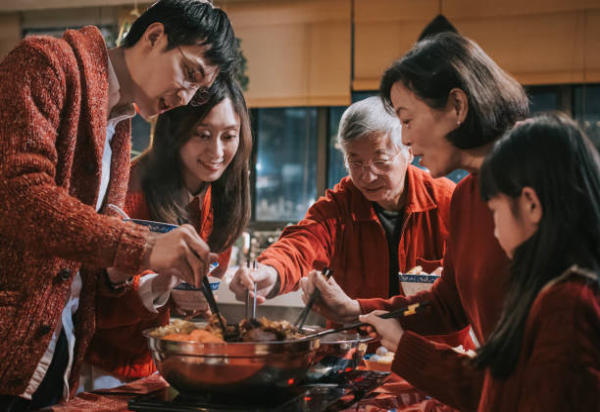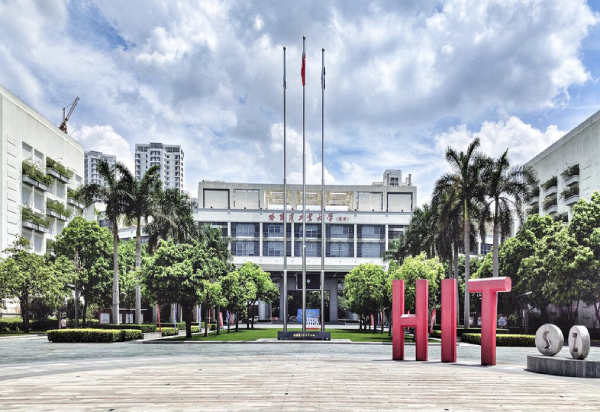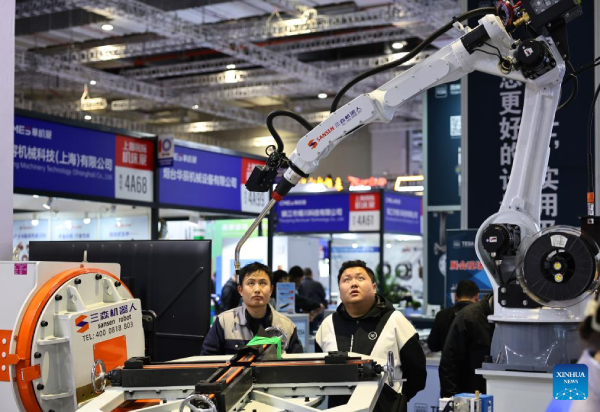Introduction: From Ancient Roots to Global Palates – The Evolving Landscape of Chinese Food
While Chinese cuisine is deeply rooted in ancient philosophies and traditions, its journey in the 21st century is marked by dynamic innovation, widespread global integration, and a burgeoning culinary tourism sector. This evolution reflects not only shifting consumer preferences within China but also the nation’s increasing influence on the global stage. From the rise of health-conscious eating to the proliferation of Michelin-starred Chinese restaurants worldwide, the culinary landscape is undergoing a profound transformation.
This evolution in Chinese cuisine presents an interesting paradox between tradition and modernity. Rather than abandoning its past for the new, or rigidly adhering to old ways, Chinese cuisine navigates a path where traditional elements are re-evaluated, re-interpreted, and sometimes even commercialized in new forms. This reflects a cultural confidence in adapting while retaining identity, suggesting a sophisticated approach to cultural preservation in a globalized world.
Furthermore, the discussion of urbanization and increased disposable incomes driving food trends directly links culinary evolution to broader socio-economic changes within China. Additionally, the extensive global reach and adaptation of Chinese cuisine—from the widespread American Chinese food to the increasing number of Michelin-starred establishments —reflects China’s growing economic power and cultural soft power on the world stage. Cuisine thus becomes a tangible manifestation of China’s rise as a global player, with its culinary exports and innovations mirroring its broader geopolitical and economic influence.
This article will explore how modern Chinese cuisine is a dynamic force, characterized by ongoing innovation, widespread global integration, and a burgeoning culinary tourism sector, continually adapting to new demands while preserving its rich heritage.
I. Modern Culinary Trends within China
Health and Wellness: A New Culinary Imperative
A significant trend in modern Chinese cuisine is the rising demand for health and wellness-oriented foods. Consumers are increasingly seeking functional foods and beverages with added nutrients or probiotics. There’s a growing preference for “clean label” products, featuring simple, recognizable ingredients and avoiding artificial additives, preservatives, and colorings. Plant-based options, including alternative meat products, are also gaining traction. Chinese consumers are focusing on personalized nutrition solutions tailored to their age, lifestyle, and specific health goals, with a notable emphasis on ingredients that promote gut health, healthy aging, and cognitive function. This shift indicates a more sophisticated and proactive approach to diet.
These observed trends—the rising demand for functional foods, personalized nutrition, and sustainable practices —signal a profound shift in consumer values within China. This indicates that as disposable incomes rise and urbanization progresses, Chinese consumers are becoming more sophisticated, health-conscious, and ethically aware. The significant willingness to pay a premium for sustainability further suggests a growing environmental and social conscience, moving beyond mere economic considerations. This implies that the future of the food industry in China will be increasingly shaped by values-driven consumption, requiring brands to demonstrate not just quality but also social and environmental responsibility.
Convenience and Urbanization: Adapting to Modern Lifestyles
Rapid urbanization in China has significantly impacted food consumption patterns, driving a higher demand for convenience. This includes a growing market for ready-to-eat meals and innovative packaging solutions designed to fit busy urban lifestyles.
Sustainability: The Green Evolution in Food
Sustainability has become a key factor influencing purchasing decisions among Chinese consumers, who increasingly favor brands committed to reducing their environmental impact. This preference extends to eco-friendly packaging, sustainable sourcing, and responsible production methods. Approximately 66% of consumers are willing to pay a premium for brands that address environmental concerns, reflecting a growing environmental and social conscience.
Revival of Traditional Heritage: Reconnecting with Culinary Roots
Amidst modernization, there’s a renewed interest among Chinese consumers in reconnecting with their culinary roots and traditional heritage. This trend encourages brands to use authentic ingredients and revive traditional cooking methods, ensuring that ancient flavors and techniques are not lost but re-embraced and sometimes innovatively paired with modern elements.
AI for Recommendations: The Digital Palate
The integration of artificial intelligence (AI) is also shaping modern food consumption, with some consumers utilizing AI for personalized food recommendations, reflecting the broader digital transformation of daily life in China. This highlights that technology is not just a peripheral tool but a transformative force in the Chinese food industry. It enables a more tailored and efficient food experience, catering to individual preferences and busy urban lifestyles. This implies that future food innovation will increasingly rely on digital solutions to meet evolving consumer demands for personalization and convenience, while also potentially supporting sustainable practices through optimized supply chains and reduced waste.
Table 4: Top Food Trends in China (2025)
| Trend Category | Key Characteristics/Consumer Preferences | Examples/Implications |
| Ingredients Demand | Prioritizing high-quality, natural ingredients; willingness to explore unfamiliar options for health benefits; demand for “clean label” products (no artificial additives); growing interest in plant-based options. | Rise in functional foods (turmeric, mulberry leaf extract); preference for organic ingredients; brands focusing on transparent sourcing. |
| Precision Wellness | Personalized health solutions tailored to age, lifestyle, and specific goals; emphasis on gut health, healthy aging, cognitive function. | Fortified milk powder for seniors; customized supplement packs; functional foods for sleep/energy. |
| Green Evolution | Preference for eco-friendly packaging & sustainable sourcing/production; willingness to pay premium for environmentally conscious brands. | Popularity of carbon-neutral certifications; brands promoting sustainable farming practices. |
| Convenience | Demand for ready-to-eat meals; innovative packaging for busy lifestyles. | Expansion of convenient meal options in urban areas. |
| Traditional Revival | Reconnecting with culinary roots; desire for authentic ingredients and traditional methods. | Brands using authentic regional ingredients; innovative flavor pairings with traditional dishes. |
| Digital Influence | Use of AI for personalized food recommendations; reliance on social media for culinary inspiration. | AI-powered meal planning apps; trending food content on platforms like Xiaohongshu. |
This table is highly valuable for an industry report segment as it directly addresses current and future market dynamics in China’s food sector. It provides a clear, categorized overview of evolving consumer behavior, helping content publishers and businesses understand what resonates with the modern Chinese consumer. By summarizing “consumer insights and preferences,” it makes complex market data actionable, highlighting key areas for content creation, product development, and marketing strategies.
II. The Global Reach of Chinese Cuisine: Adaptation and Fusion
A. American Chinese Cuisine: A Case Study in Adaptation
American Chinese cuisine has significantly adapted from traditional Chinese food to suit American tastes, resulting in distinct differences in flavor, ingredients, and preparation. Many popular American Chinese dishes, such as fortune cookies, crab rangoon, and General Tso’s chicken, did not originate in China. Adaptations include greater quantities of meat, use of Western broccoli instead of traditional gai-lan, and more soy sauce in dishes like fried rice. Dim sum has also been modified with added batter for fried dishes.
This adapted cuisine played a crucial role in providing economic opportunities for Chinese immigrants in the late 19th century, serving as a survival strategy against discrimination. It also acted as a cultural bridge for Chinese Americans and introduced new cooking methods like stir-frying and steaming to the United States. Notably, it gained acceptance among various minority groups, including African Americans and the Jewish community, due to its affordability and adaptability.
American Chinese food is often criticized for lacking “authenticity” due to its divergence from traditional Chinese tastes and ingredients. However, some argue that it represents a “new authentic” Chinese cuisine, a product of Chinese immigrants adapting their recipes to a new environment. This ongoing debate highlights the malleable nature of cuisine and the complexities of cultural integration. Despite criticisms, its popularity transformed a “foreign fare” into one of the most consumed cuisines in the US.
B. High-End Innovation and Michelin Recognition
Chinese cuisine is increasingly gaining recognition on the global fine dining stage, evidenced by the growing number of Michelin-starred Chinese restaurants worldwide. Shanghai alone boasts numerous Michelin-starred Chinese establishments across various regional styles, including Cantonese, Shanghainese, Chao Zhou, Huaiyang, Shandong, Fujian, Jiangzhe, Sichuan, Beijing, Taizhou, Ningbo, and Dim Sum. While the US has fewer, there is at least one Michelin-starred Chinese restaurant.
High-end Chinese culinary innovation often involves blending traditional Chinese flavors with contemporary techniques and global ingredients. Examples include “Jee” in Hong Kong, pioneering a Cantonese-Italian fusion, and “Tuber Umberto Bombana,” integrating Hong Kong ingredients like truffles into Italian cuisine. Historically, “Shanghai Western Cuisine” (Hai Pai Xi Can) emerged as a unique fusion in the mid-19th century, blending local Shanghai flavors with French, German, and Russian influences.
Master chefs are at the forefront of this innovation, pushing culinary boundaries while honoring traditional principles. For instance, Chef Guo operates the first tasting menu Chinese restaurant in the U.S., blending ancient imperial cooking philosophy with modern nutritional science and global techniques. His approach emphasizes balance, moderation, and the use of natural, high-quality ingredients from around the world. This signifies a shift in perception, elevating Chinese cuisine to a sophisticated, globally competitive art form.
The increasing number of Michelin-starred Chinese restaurants and the emergence of high-end fusion concepts signify a critical shift in the international perception of Chinese food. It moves beyond the historical “cheap meal” stereotype to being recognized as a sophisticated, innovative, and globally competitive culinary art form. This implies a maturation of the global palate and a greater appreciation for the complexity, artistry, and diverse regional expressions inherent in Chinese cooking, positioning China as a significant force in the international gastronomic world.
Table 5: Evolution of American Chinese Cuisine vs. Traditional Chinese Cuisine
| Aspect | Traditional Chinese Cuisine | American Chinese Cuisine | Impact/Significance |
| Origin | Rooted in diverse regional culinary traditions of China. | Developed by Chinese immigrants in the U.S. in late 19th C. | Survival strategy for immigrants, cultural adaptation. |
| Flavor Profile | Varied, subtle, emphasis on balance of 5 tastes, regional spice. | Often sweeter, bolder sauces, deep-fried, less nuanced. | Catered to American palate, led to new flavor preferences. |
| Ingredients | Uses Asian leafy vegetables (bok choy, gai-lan); specific regional produce. | Uses Western ingredients (broccoli); greater meat quantity. | Introduction of new ingredients/techniques to US. |
| Key Dishes | Peking Duck, Mapo Tofu, Xiaolongbao, Biang Biang Noodles. | General Tso’s Chicken, Crab Rangoon, Fortune Cookies. | Creation of unique “fusion” dishes not found in China. |
| Societal Role | Integral to cultural identity, festivals, family rituals. | Economic opportunity for immigrants; cultural bridge. | Reduced discrimination, fostered cross-cultural understanding. |
| Authenticity Perception | Considered “authentic” within its cultural context. | Often criticized as “fake” or “inauthentic” by purists. | Sparked debates on culinary authenticity, highlighted cuisine’s malleable nature. |
This table directly addresses a key aspect of globalization and cultural adaptation, which is central to the second article. By systematically contrasting American Chinese cuisine with its traditional counterpart, it visually demonstrates the profound impact of migration and cultural exchange on culinary traditions. For a global audience, it helps demystify the “authenticity” debate, showing how cuisine evolves to meet new environments and consumer demands. This analytical tool provides a clear framework for understanding the complexities of culinary globalization.
III. Culinary Tourism: Experiencing China Through its Food
A. The Rise of Food Tourism in China
Food’s role in tourism has expanded beyond merely satisfying physiological needs; it has become a primary attraction in itself. The emerging “yanhuo” trend in Chinese culinary tourism emphasizes the vibrant local lifestyle, emotional experiences, and cultural immersion that food offers, moving beyond traditional sustenance to a holistic engagement with local life. This trend prioritizes atmosphere, local culture, emotional connection, value for money, and sociability.
Food tourism brings significant economic benefits to local economies, boosting agricultural sectors and creating numerous job opportunities. It enhances a city’s popularity, promotes tourism income, improves social facilities, and directly enriches the lives of local residents. Food festivals, for instance, add prestige and attract large numbers of visitors, contributing substantially to local economies.
Despite the benefits, food tourism carries potential drawbacks. A significant concern is the potential “loss of traditional cuisine” as local dishes may be altered to cater to diverse tourist tastes, leading to the dilution or disappearance of authentic flavors and cooking methods. Other issues include ethical concerns related to animal consumption (e.g., dogs or cats, where legal), risks of diseased food, a lack of policy to prevent brand abuse, and authenticity issues with “spurious palace cuisine” that is expensive and inauthentic.
The emergence of the “yanhuo” trend , which emphasizes vibrant local life and emotional experiences through food, coupled with the increasing demand for “authentic food tours” and “cooking classes” , indicates a strategic shift in China’s tourism sector. This move goes beyond traditional sightseeing to offer deeper, more immersive cultural experiences centered around food. This implies that culinary tourism is recognized not just for its direct economic benefits but as a powerful tool for soft power, fostering cultural understanding, and promoting a more nuanced image of China globally. It’s a deliberate effort to attract a new generation of travelers seeking authentic engagement.
B. Immersive Culinary Experiences: A Taste of Culture
Food Tours: Organized food tours offer visitors an immersive way to explore China’s diverse culinary landscapes. These tours often include visits to bustling street food markets , where travelers can sample regional specialties like Shanghai’s soup dumplings, Beijing’s Peking Duck, Chengdu’s hotpot, and Xi’an’s noodles. They provide a direct engagement with local flavors and daily life.
Cooking Classes: For those seeking a deeper understanding, cooking classes offer hands-on opportunities to learn about Chinese food culture, cooking techniques, and regional cuisines. Participants can learn to prepare iconic dishes such as Mapo Tofu, Gongbao Chicken, Xiaolongbao, or hand-pulled noodles, taking home not just recipes but also a profound appreciation for the culinary art.
Integration with Travel: Culinary experiences are increasingly becoming central attractions in broader travel itineraries across China. Food is recognized as the “soul of a Chinese city” , where it offers a unique lens through which to understand regional cultures and lifestyles. This integration means that a trip to China is incomplete without a deep dive into its gastronomic offerings.
Conclusion: The Future of Chinese Cuisine – A Global and Dynamic Force
Chinese cuisine, from its ancient philosophical roots to its modern adaptations, remains a vibrant and essential aspect of Chinese identity. In the 21st century, it continues to evolve, driven by internal trends like health consciousness and convenience, and shaped by global integration and high-end innovation. The burgeoning culinary tourism sector offers immersive experiences that connect visitors directly with China’s rich gastronomic heritage. As Chinese food continues its global journey, it serves not only as a source of sustenance and pleasure but also as a powerful medium for cultural exchange, continually engaging with global trends while steadfastly preserving its profound traditions. This dynamic interplay ensures that Chinese cuisine will remain a leading and influential force on the world’s culinary stage








